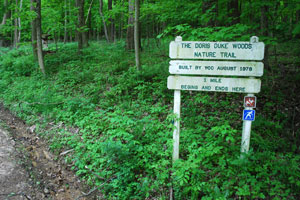
 Just like your mother told you before you left the house for an evening of fun with your buddies: "Be back on time or else!" She was adamant about being on time for several reasons, primarily for your safety and for her sanity.
Just like your mother told you before you left the house for an evening of fun with your buddies: "Be back on time or else!" She was adamant about being on time for several reasons, primarily for your safety and for her sanity.
Waiting up for your kid to return home safely is nerve racking. So is waiting for a returning hiker. When he or she is late to arrive from hiking or to meet at a planned spot or trailhead, dreadful scenarios begin to run through the waiting party's mind.
That's why it's important to pay close attention when planning a hike and be realistic when calculating the time it takes for you to complete it.
How to Calculate Hike Time
The typical walking speed of an adult is two miles per hour on level ground. However, there are factors that will impact hiking time, such as terrain, weather, sightseeing stops and other time consuming activities. So when calculating the time needed to complete a hike, take each factor into consideration.
And just because the trail roams down a hill or two, don't think that time will be gained by going downhill faster. Knees take a pounding on descents, so stay with two miles per hour as an accurate average for planning.
If you do find yourself behind schedule, adjust your stops and sightseeing duties to allow more time spent moving along to reach your destination on time. Picking up the pace is fine, as long as you are mindful of not putting too much stress on the body. Once you are physically spent, the entire time schedule is off and injuries are likely to occur.
If you have left your hike plan with relative or friend, which you always should, and if you have cell phone signal, give them a call and let them know you are running late. Remember to plan your hike and hike your plan. Doing so will keep your home base person informed and relaxed — even a worried momma.
- 3100 views

